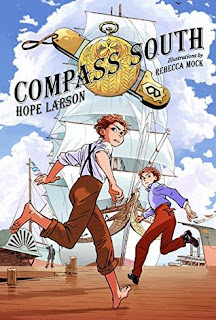Reading Images is as Important as Reading Words
Alternative literacies are becoming increasingly relevant in our image-driven, fast-paced media world. Students are going to encounter texts that are heavily (perhaps entirely) graphic in nature, and they need the skills to accurately process the message of such tests. We see this reflected to some extent now on state assessments and standardized tests in the form of the (occasional) chart or map; I think the trend of asking students to interpret graphic information is likely to increase in the near future.
Political cartoons are a great place to start for fun, thought-provoking lessons that can be accomplished in just a few minutes--perhaps as a bell-ringer. Of course, you might want to stay away from hot current events, as there's a possibility, in these divided times, of angering some far-right or far-left parent, and who needs that kind of headache? Perhaps stick to historical political cartoons--they might be safer:
Ask students to describe what they see--what does each element represent? What is the message the illustrator is trying to convey? What persuasive techniques is she using? A nifty resource on-line is History Skills -- definitely worth checking out. Of course, our colleagues in the Social Studies department can be a tremendous help in instructing and practicing the interpretation of graphic information: maps, charts, graphs; by all means, enlist their help and offer to collaborate.
But we're English teachers, and our hearts are set on fire not by politics but by great stories artfully told. Well, there are some great ways to incorporate visual literacy into the literature curriculum. The proliferation of graphic novels, not as substitutes for original written texts but as original narratives standing on their own literary merits, is widely available (although pretty pricey on an educator's budget). Check out Compass South and its sequel Knife's Edge by Hope Larson and illustrated by Rebecca Mock (my former student 💖)--a wonderful story full of adventure and great story telling sure to engage the most reluctant reader (grades 5-8):


The Invention of Hugo Cabret is a sumptuously illustrated novel that I fell in love with--beautiful art, compelling narrative, and a gateway to a lost world of silent film making and automatons. Just brilliant!!
Another great novel to share with students is Art Spiegelman's Maus, a Holocaust allegory that really humanizes the harrowing events that ordinary individuals lived through (grades 7-10). This powerful narrative does much of its story telling through the use of visual elements, so it's a great way to help students develop their visual literacy. I put together a study guide that focuses in on the graphic analysis skills that students need to master. Check it out:
Gary Schmidt's Okay for Now is a wonderful hybrid: a great young adult novel which revolves around the amazing and awesome bird paintings of John Audubon. Each chapter begins with one of Audubon's paintings and really focuses on the emotional quality of the painting; the action of the chapter mirrors the painting. Unfortunately, the images in the book, at the beginning of each chapter, are pretty poor (and in black and white). I wanted students to see them clearly, and to make the connections between painting and chapter, so I created an assignment that allows them to do just that. But then, to take it further, I included several more Audubon paintings not in the novel and asked students to carefully analyze what they saw, describe it, and impart an emotional mood to the painting. Students and I really enjoyed this (grades 5-8):





Well, after running around in circles, I wasn't going to be defeated. I finally, after about 30 minutes, figured out how to post a comment!
ReplyDeleteI wanted to add here that the Classics Illustrated, in addition to your suggestions, are a great way to get students interested in reading the Classics, as well as Shakespeare. My students used to love them.